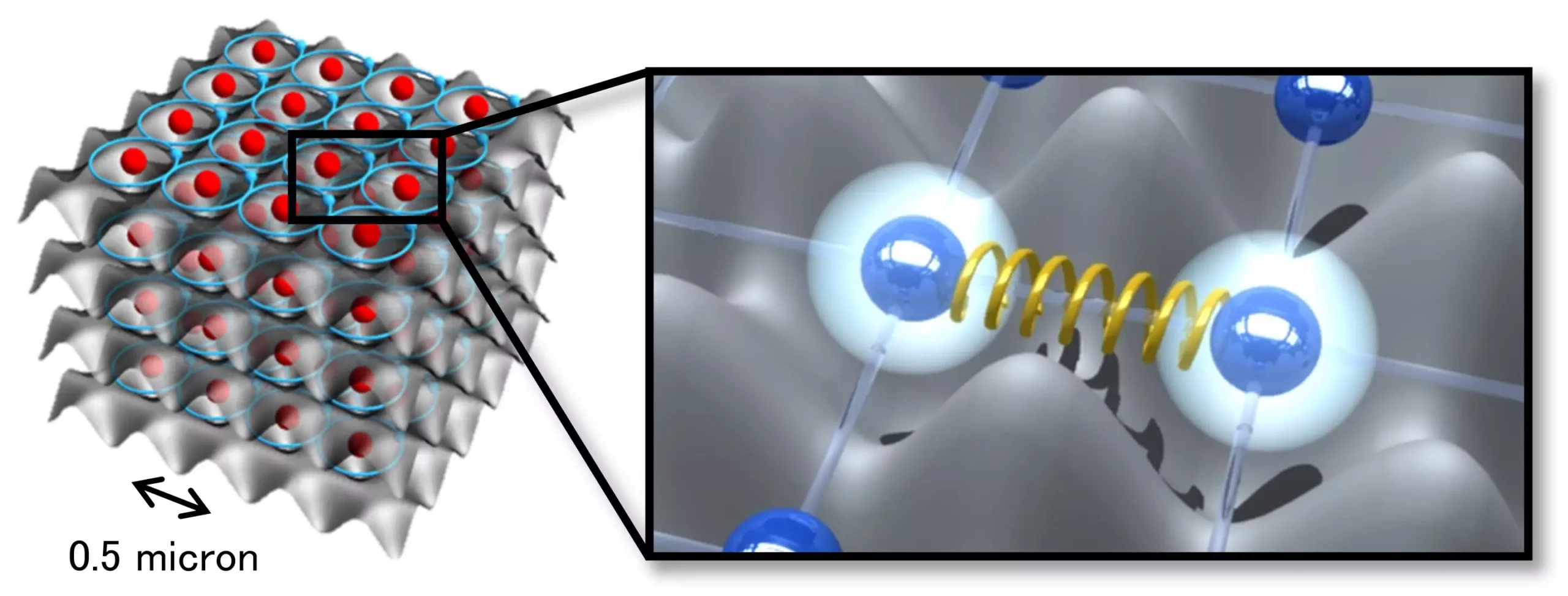In the rapidly evolving field of quantum technology, groundbreaking advancements are emerging from various research corners. One significant study conducted by researchers at the Institute for Molecular Science recently caught the attention of the scientific community. The researchers focused on the interplay of electronic and motional states in an ultrafast quantum simulator, employing Rydberg atoms. Published in *Physical Review Letters* on August 30, this research pushes the boundaries of quantum simulation methods and holds implications for future technological innovations, such as quantum computing and quantum sensing.
Rydberg atoms, recognized for their giant electronic orbitals, provide a unique avenue for generating and manipulating quantum entanglement—a crucial phenomenon that underpins quantum mechanics. The repulsive forces between Rydberg atoms serve as a catalyst for quantum state correlations, enhancing our understanding of entanglement in ultra-cold atomic systems. In essence, when these atoms are appropriately excited, they display strongly correlated behaviors, allowing researchers to assess quantum states with unprecedented precision.
The authors’ experimental work involved cooling around 300,000 Rubidium atoms to a frigid temperature of just 100 nanokelvin using laser cooling techniques. These atoms were then captured in an optical lattice with a spacing of 0.5 microns. The researchers generated a superposition state that consisted of an electron occupying the 5s ground state and one in the 29s Rydberg state, by utilizing a short-duration ultrafast laser pulse lasting a mere 10 picoseconds.
Notably, the intricate process of creating Rydberg states has typically faced limitations due to Rydberg blockade—a phenomenon in which nearby atoms cannot be simultaneously excited to Rydberg states. However, the team cleverly circumvented this limitation through their ultrafast excitation techniques. By observing the time evolution of the resultant quantum superposition, they captured how electronic and motional entanglement manifested in a mere few nanoseconds. The strong repulsive forces between nearby Rydberg atoms fundamentally generated correlations between their electronic states and their respective motions.
The Role of Quantum Entanglement
The essence of quantum mechanics lies in the concept of entanglement, the idea that quantum states of particles can exist in a correlated manner irrespective of the distance separating them. The research showcases a novel form of entanglement, bridging the gap between electronic states and motional states within Rydberg atoms. The repulsive forces played a critical role, creating conditions that fostered this interplay—whereby the states of the atoms’ movement were intertwined with their electronic configurations. This significant observation not only adds complexity to our understanding of atomic interactions but also opens new pathways for practical applications in quantum technology.
Implications for Future Quantum Technologies
The implications of these findings go beyond mere academic curiosity. With the newly proposed quantum simulation method that incorporates repulsive forces among particles—such as electrons in various materials—we are on the cusp of enhancing our ability to model complex quantum systems. The capability of dynamically controlling interactions at a nanoscale using Rydberg atoms could herald a new era in quantum simulations, offering insights into fundamental properties of materials and potentially leading to advancements in quantum communication and computation.
Moreover, the research group’s work on an ultrafast cold-atom quantum computer, which significantly accelerates qubit operations, illustrates the practical applications of their discoveries. The innovative methodology they explored not only aims to retain fidelity during two-qubit gate operations but also addresses one of the core challenges in quantum computing: the negative impact of atomic motion. Improving fidelity in quantum operations is crucial for developing reliable quantum computers that can deliver on their theoretical promise.
The pioneering work by researchers at the Institute for Molecular Science represents a decisive advancement in our understanding of quantum entanglement and its applications. Their investigation into the entanglement between electronic and motional states in Rydberg atoms not only challenges previous limitations posed by Rydberg blockade but also lays the groundwork for future innovations in quantum simulation and computing. As researchers build upon these findings, the potential for socially transformative quantum technologies becomes increasingly tangible, heralding a new frontier in science and engineering.

